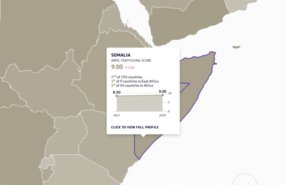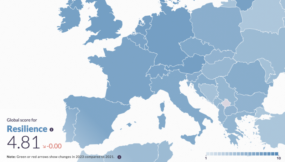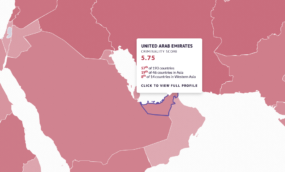Posted on 24 Feb 2025
In September 2024, Cambodian journalist Mech Dara was arrested on charges of inciting social unrest through what the authorities described as ‘provocative’ and ‘false’ social media posts. Dara, who worked for the BBC and other respected media organizations, had won awards for his in-depth reporting on corruption and online scam operations in Cambodia. An outpouring of international support followed his arrest, including from US government officials, and human rights and civil society pressure groups. Although he has been released from pre-trial detention, he still faces the possibility of two years in prison. He told reporters that he plans to quit journalism: ‘I have lost my courage,’ he said.
Dara is just one of many journalists around the world who are threatened for bravely red-flagging criminal activity. The targeting of media practitioners is increasing at an alarming rate particularly in Asia. According to the Committee to Protect Journalists (CPJ), 361 journalists worldwide were imprisoned in 2024 as a result of their work, the second-highest number since the CPJ began tracking in 1992. Fifty of them were in China and 35 in Myanmar. Governments are among the main culprits when it comes to attacks on media freedom, responsible for 45% of the world’s missing journalists, as noted by the 2024 World Press Freedom Index. The index found that journalists in the Asia-Pacific region face a dire situation: the region is ranked second worst in the world for press freedom after the Middle East and North Africa.
Authoritarian repression of the media is supported by the findings of the 2023 Global Organized Crime Index, which point to a trend of governments suppressing dissent, opposition and media freedom. Of the 12 resilience indicators measured by the Index, the ‘non-state actors’ indicator (which quantifies the role of civil society, including the media, as an alternative source of resilience to organized crime) declined the most globally, by 0.16 points. In Asia, this indicator not only had the lowest average score of the five continents (3.72 out of 10), but also experienced the largest decline since 2021. Six of the world’s 11 lowest-scoring countries for non-state actors were in Asia, including Afghanistan (1.0), North Korea (1.0), Vietnam and Myanmar (both 1.50). These countries also scored low on ‘government transparency and accountability’.
More surprisingly, Oceania is beginning to show signs of this trend. Although the Oceania countries covered by the Press Freedom Index are all described as having a ‘satisfactory’ press freedom situation, Papua New Guinea was observed to have a ‘problematic’ situation and identified as having the largest decline in Oceania since 2023. Papua New Guinea also ranked highest in Oceania for criminality (5.72) and lowest for overall resilience (3.29) and non-state actors (2.5) under the Organized Crime Index. This suggests that whereas Oceania’s overall criminality score is well below that of all other world regions, media freedom is nevertheless under threat there.
In many cases, the decline in media freedom can be attributed to the tightening grip on news by autocratic governments, which are becoming increasingly assertive in controlling the flow of information. Some experts have warned of a sustained decline in levels of democracy around the world, with the proportion of the world’s population living in autocratizing countries now exceeded those in democratizing nations. In this landscape, declining freedom of expression, including media independence, has been one of the greatest democratic losses. In Asia, the Democracy Index notes that more than half of countries have experienced a decline in freedom of expression since 2023.
In Afghanistan, for example, the media faces severe restrictions on critical reporting. Press freedom has plummeted since the Taliban took power, with nearly half of the country’s media outlets disappearing. According to the Afghanistan Journalists Center, in September 2024 the Taliban issued new guidelines requiring media managers to obtain government approval for everything from the political topics they cover to the guest commentators they invite on their programmes.
Similarly, in Myanmar, which is ranked 171 out of 180 countries in the Press Freedom Index, legislative amendments introduced following the 2021 coup have had a damaging impact on freedom of expression, criminalizing any statements against the military government. The changes have led to the banning of most independent media outlets, and the arrest and forced exile of scores of journalists, to the extent that the Myanmar government was the world’s third highest jailer of journalists in 2024.
The situation in these and other countries highlights the inextricable link between countries’ resilience to organized crime and their level of democratic freedoms, including a free and fair press. Indeed, a strong correlation was found between the Economist Intelligence Unit’s Democracy Index and the Organized Crime Index’s resilience scores. In other words, where the pillars of democracy are strong in a country, resilience to organized crime is likely to be more robust, and vice versa.
This premise is supported by the inaugural Pacific Islands Media Freedom Index report, published in September 2024, which shows that countries like Samoa are leading the way in ensuring press freedom through robust legal frameworks, effective security mechanisms, financial sustainability and inclusive socio-cultural environments. Samoa had one of the highest resilience scores in Oceania under the 2023 Organized Crime Index.
Fostering cooperation between civil society organizations, including the media, and government institutions that have demonstrated integrity in their functions is a crucial first step in building sustainable resilience and fighting organized crime. While there is no easy solution to the challenge of ensuring media freedom, indices can offer insights into the bigger picture by providing the public with access to crucial information. By quantifying the severity of the threat, these tools also draw attention to governments that silence journalists like Mech Dara and others across Asia, ensuring that their attempts to stifle press freedom do not go unnoticed.
This analysis is part of the GI-TOC’s series of articles delving into the results of the Global Organized Crime Index. The series explores the Index’s findings and their effects on policymaking, anti-organized crime measures and analyses from a thematic or regional perspective.



